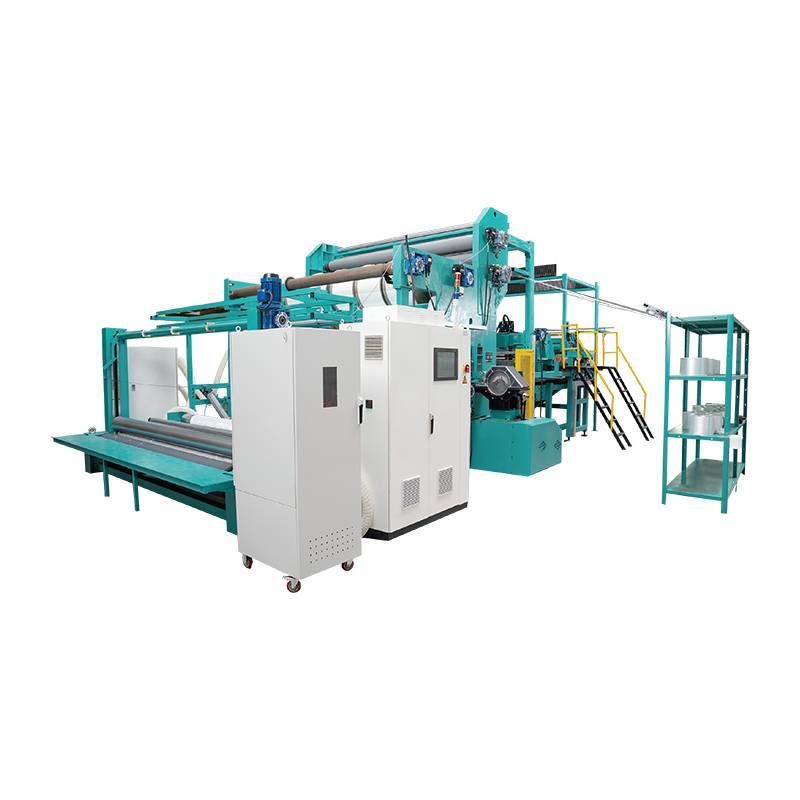The main difference between a warp knitting machine and a weft knitting machine is the direction of yarn movement and fabric formation. Warp knitting machine: In a warp knitting machine, the yarns are stretched parallel to the length of the fabric (warp direction) and interlock in a zigzag pattern to form loops. Multiple yarns, called warps, are used simultaneously to produce fabric. Warp knitting machines are capable of producing intricate lace, netting and other types of complex fabrics. Weft knitting machine: In a weft knitting machine, the yarn is fed perpendicular to the length of the fabric (the weft direction) and loops are formed horizontally across the width of the fabric. Single yarns, called wefts, are used to produce fabrics. Weft knitting machines are commonly used to produce jersey, rib, and other basic knitted fabrics. Overall, warp knitting machines are more sophisticated and can produce a wider range of complex designs, while weft knitting machines are more versatile and are typically used to produce simpler knitted fabrics.
How do you know if you are warp or weft knitting?
To determine whether you are working on a warp or weft knitting project, you can consider the direction of the yarn or fabric and the type of stitch used. In warp knitting, the yarns usually run vertically and are called warps. Warp knitting machines produce fabrics with a unique knitted structure characterized by vertical loops formed by multiple yarns. If you are making fabric using this method, you will be using warp knitting. In weft knitting, the yarns run horizontally and are called wefts. This type of knitting produces fabrics with a different appearance, characterized by multiple rows of interlocking stitches formed from a single yarn. If your project involves the horizontal movement of individual yarns to create fabric, then you may use the weft knitting technique. By paying attention to the direction of the yarn and the resulting fabric structure, you can determine whether you are warp or weft knitting.
Why dimensional stability of warp knitting is better than weft knitting?
Warp knitting generally has better dimensional stability than weft knitting due to the structure and arrangement of the yarns in the fabric. In warp knitting, the yarns are arranged vertically and parallel to each other. This arrangement provides greater resistance to stretching and twisting, resulting in improved dimensional stability. The vertical arrangement of yarns in warp knitted fabric helps it maintain its shape and size even after being stretched or worn. In weft knitting, on the other hand, the yarns are arranged horizontally and intertwined with each other in different ways. This structure causes the fabric to deform and stretch more easily, resulting in reduced dimensional stability compared to warp knitted fabrics. Overall, the vertical arrangement of yarns in warp knitting enhances the dimensional stability of the fabric, making it a first choice for applications where maintaining shape and size is critical, such as technical textiles and certain types of clothing.
Are warp knits flexible or stable?
Warp knitted fabrics are known for their flexibility and stability. Due to the way the yarns are interconnected, the structure of warp knitted fabrics is highly flexible. At the same time, the arrangement of the yarns in warp knitting provides stability and resistance to stretch, ensuring the fabric retains its shape and structure. This combination of flexibility and stability makes warp knitted fabrics versatile and suitable for a wide range of applications in industries such as fashion, sports and technical textiles.
Post time: Dec-11-2023

